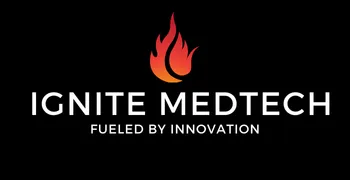Training and Webinars
We'll show you how it's done
Cohort based courses to free webinars get the resources you need to tackle the marketing yourself
Blog
We are passionate about healthcare marketing and love sharing our insights, tips, and strategies. Sign up to get the latest edition in your inbox.

Pricing Worksheet

How To Use This Worksheet.
Click on the image above to access.
Step 1 — Set the Stage: Define Your Pricing Context
Before you start scoring or strategizing, open Section 1 and capture the basics:
Your current price or target list price
The primary competitor and their price
Your FDA pathway (helps gauge market maturity and perceived risk)
Whether your product feelscommodity, premium, or nichein buyers’ minds
👉 This section sets your “pricing environment.” You’ll see whether you’re fighting a commodity battle or building a premium category.
Step 2 — Audit Your Brand Equity
Go to Section 2 and rate yourself 1–5 on the six Brand Leverage Drivers:Trust, Differentiation, Experience, Storytelling, Visibility, Proof.
Be brutally honest — this is your internal brand audit.
1 = Weak or missing
3 = Developing but inconsistent
5 = Strong, repeatable, and recognized
Add the numbers and divide by 30 for yourBrand Leverage Score.
Then interpret:
0–10 = Price-Driven:You’ll need aggressive pricing or partnerships to win business.
11–20 = Performance-Driven:You can justify parity pricing if you clearly show value.
21–30 = Brand-Driven:You’ve earned premium pricing power — lean into it.
👉 This score reveals whether your brand candefendhigher pricing or if you first need to build credibility.
Step 3 — Reflect on Elasticity
In Section 3, answer the “what-if” prompts.
This is where you explore customer psychology:
What story supports a price increase?
What message would a discount send?
Whatfeelingdo customers get when choosing you?
How replaceable are you?
👉 The goal is to uncover whether your pricing is anchored in emotion and trust or purely logic and budget.
Step 4 — Choose Your Strategy
Use Section 4 to decide which pricing model fits your stage and strength:
Competitive:if you’re in a crowded 510(k) market and need share fast
Value-Based:if you can quantify efficiency, safety, or outcomes
Premium Brand:if reputation and KOL advocacy are already strong
Penetration:if you’re early and need usage data before scaling price
👉 You’ll see which path your brand can realistically supporttodayand which one you’re building toward.
Step 5 — Create Your Action Plan
Section 5 turns insights into execution.
List 3–5 specific tasks that will raise your brand leverage and justify price:
Define your emotional value proposition
Map competitorstoriesto clarify your differentiation
Update your messaging, decks, and website to reflect premium positioning
Add social proof (KOL quotes, pilot data, testimonials)
Train your sales team to sell belief, not discounts
👉 Treat this as a mini roadmap for the next 90 days.
Step 6 — Revisit Quarterly
Repeat the scoring every quarter or after major milestones (FDA clearance, new data, or branding update). Watch your Brand Leverage Score climb — and your ability to maintain margin improve.
Why It Works
This worksheet linksbranding, pricing, and perceptionin one place.
Instead of asking,“What should we charge?”you’ll start asking,“What have we done to make this price feel worth it?”
Use it in team workshops, investor discussions, or board meetings to show that your pricing strategy isn’t arbitrary — it’s evidence-based and brand-backed.








